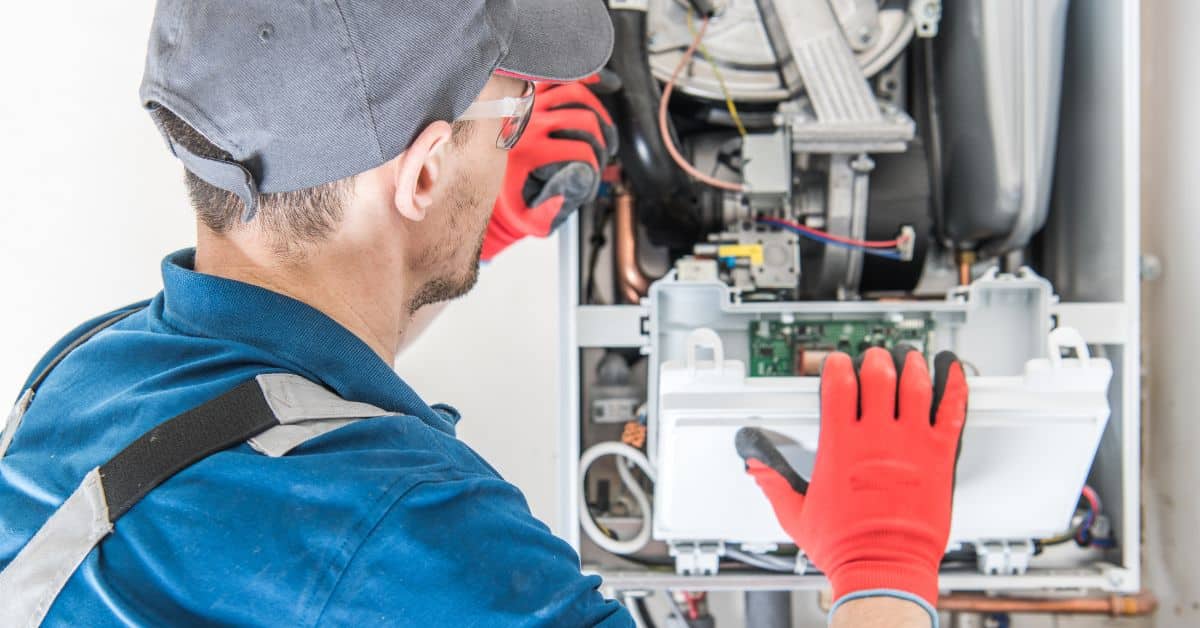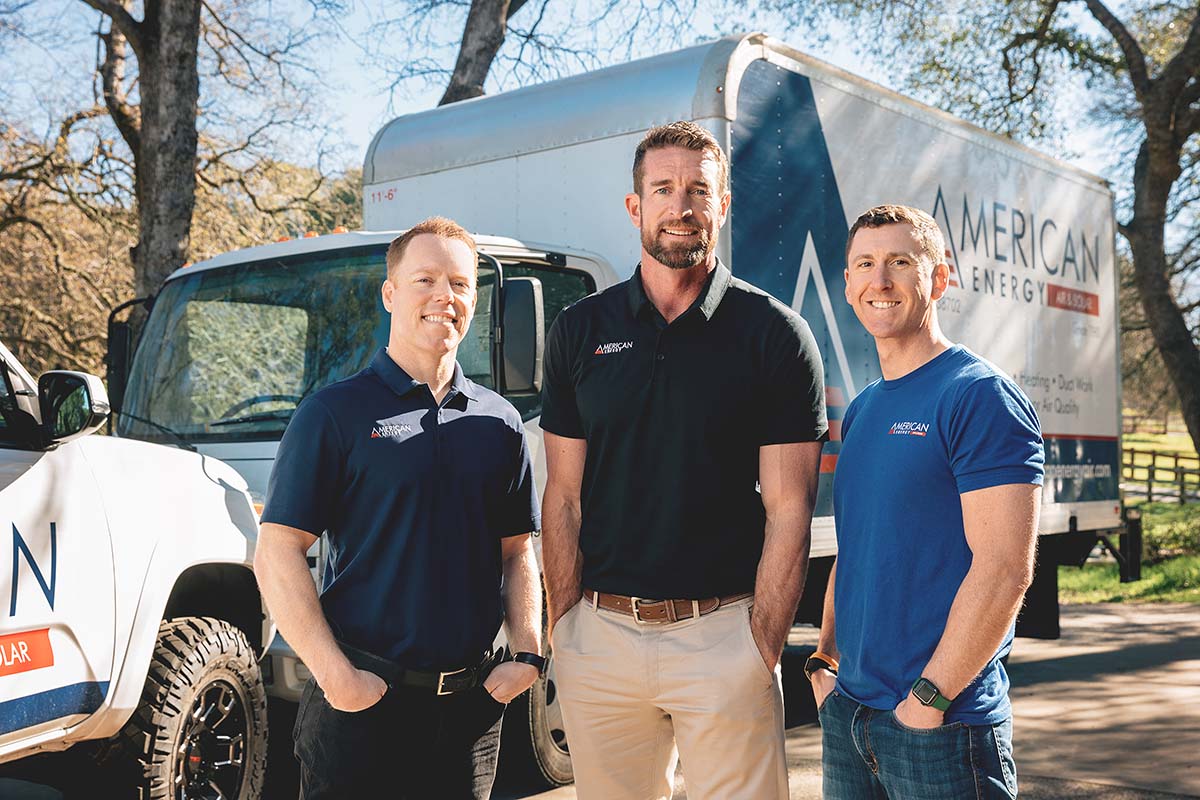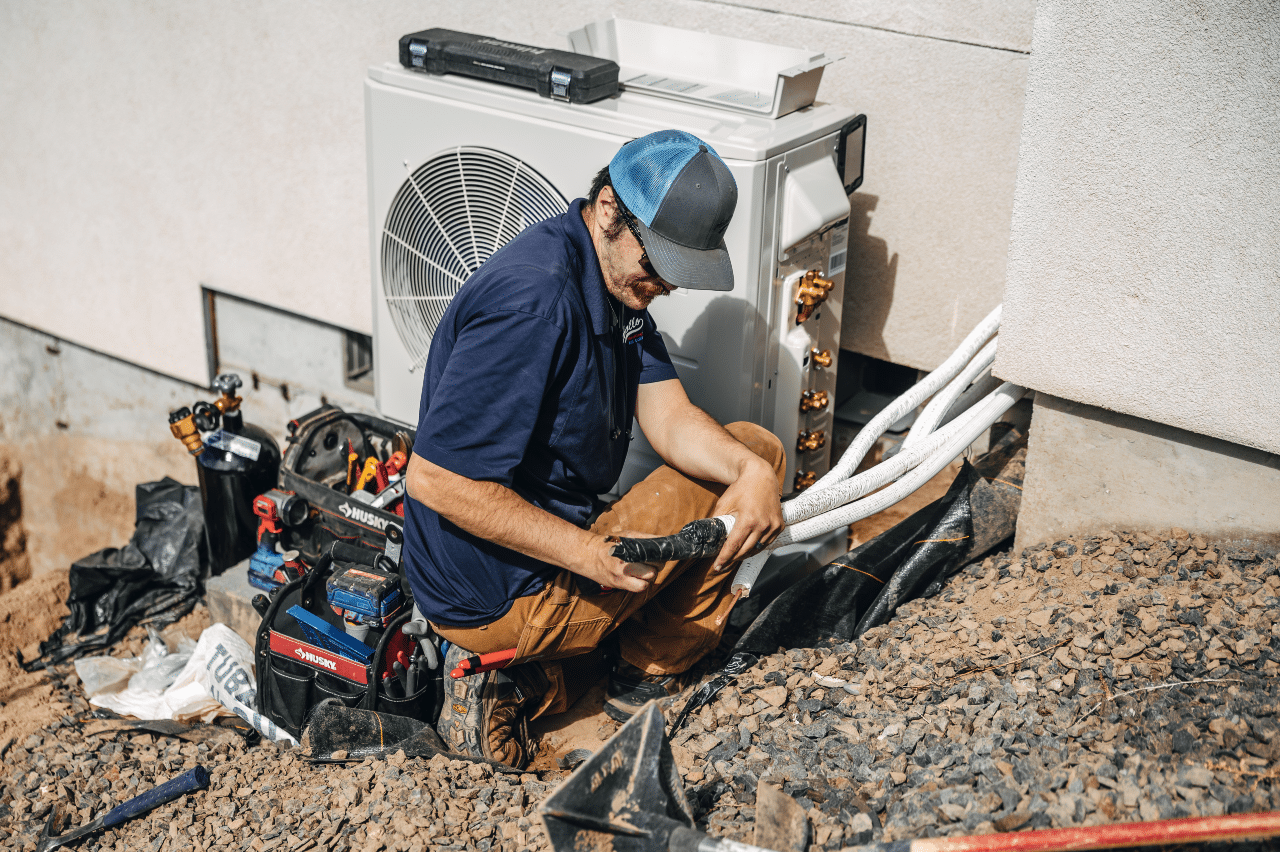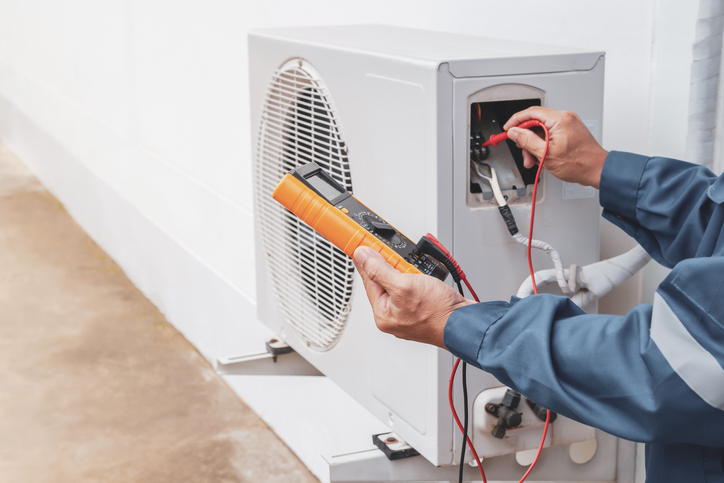Air conditioner repair: homeowner’s guide
All About Heating And Cooling: Identifying Common Issues and Effective Air Conditioning Repair Techniques
Heating and cooling systems are crucial for preserving indoor convenience. Recognizing their parts and functionality is necessary for recognizing usual issues. House owners commonly deal with troubles such as ineffective cooling, weird odors, or climbing power costs. These signs can indicate underlying issues that might call for interest. Discovering DIY troubleshooting strategies can be helpful, yet understanding when to look for expert help is equally important. What steps can be taken to ensure durable performance?
Understanding Your Cooling And Heating System: Parts and Performance
A cooling and heating system, often thought about the backbone of indoor environment control, contains numerous key elements that collaborate to manage temperature and air quality. The main elements include the home heating unit, air flow system, and a/c unit. The home heating unit, generally a furnace or boiler, creates warmth throughout cooler months, while the air conditioning device cools down interior areas throughout the summer season.

Typical HVAC Problems Homeowners Encounter
Homeowners often deal with several usual cooling and heating troubles, consisting of inconsistent temperature level circulation throughout their space. Furthermore, unusual noises throughout operation can show underlying problems that need attention. Resolving these worries immediately is vital for maintaining optimal system efficiency.
Irregular Temperature Circulation
Many houses experience the frustrating problem of inconsistent temperature level circulation, where specific areas really feel annoyingly cozy while others stay too chilly. This issue frequently emerges from a variety of factors, consisting of bad insulation, obstructed vents, or a poorly sized a/c system. When air ducts are not appropriately secured or when furniture obstructs airflow, some spaces might obtain inadequate cooling. In addition, thermostat positioning can greatly influence temperature level guideline; a thermostat located in a sunlit area may misstate the overall temperature level of the residence. Normal upkeep, consisting of cleaning filters and making certain ductwork is clear, can help minimize these disparities. Homeowners might additionally take into consideration zoning systems to much better control temperatures throughout various locations of the home, promoting a more comfy living setting.
Uncommon Noises During Procedure
When a cooling and heating system operates, unusual noises can indicate underlying issues that require attention. Home owners might encounter a series of noises, such as grinding, squeaking, or hissing. Grinding noises commonly indicate damaged bearings or elements, while squealing can suggest loosened belts or parts requiring lubrication. Hissing may suggest a cooling agent leakage, which can jeopardize the system's effectiveness. Additionally, banging noises may indicate loose ductwork or an issue with the blower fan. Each of these sounds works as a warning, motivating homeowners to explore additionally. Ignoring these signs can result in even more substantial problems and expensive fixings. Routine maintenance and timely attention to unusual sounds can enhance system durability and efficiency, making sure a comfortable living atmosphere.
Indicators That Indicate Your AC Requirements Repair Service
Just how can one tell if their cooling system needs fixing? Numerous indicators may indicate underlying concerns calling for professional focus. Initially, if the air conditioning fails to cool down the area effectively, it may suggest a cooling agent leak or compressor breakdown. Additionally, a rise in energy costs without matching use changes can indicate ineffectiveness in the system. Property owners must also be alert to unusual scents emanating from the device, which might show mold and mildew growth or electric concerns. Additionally, if the AC frequently cycles on and off, it could be an indicator of a faulty thermostat or other mechanical troubles. The presence of water pooling around the device can indicate a blocked drainpipe line. Acknowledging these indications early can conserve time and cash, ensuring that the cooling system operates effectively and effectively.
Do It Yourself Troubleshooting Techniques for HVAC Issues
When dealing with cooling and heating issues, property owners can use a number of do it yourself repairing techniques to recognize the issue. Secret approaches consist of examining thermostat settings, examining air filters, and reviewing water drainage issues. These steps can aid pinpoint common malfunctions prior to seeking expert help.
Inspecting Thermostat Setups
What actions should house owners take to guarantee their thermostat settings are proper? They must verify the thermostat is established to the wanted temperature and mode, whether home heating or air conditioning. Inspecting for a clear display and confirming the thermostat is not established to "hold" or "getaway" mode is crucial. House owners should additionally verify that the hvac mechanical contractors thermostat is level and installed in a location without drafts, straight sunlight, or other temperature level influences. Furthermore, rectifying the thermostat can assist supply precise analyses. If the thermostat runs on batteries, replacing them may deal with any concerns. By methodically assessing these variables, home owners can frequently determine and remedy thermostat-related troubles, advertising suitable cooling and heating system efficiency.
Inspecting Air Filters
Air filters play an important role in maintaining optimal heating and cooling performance. They catch dirt, allergens, and various other fragments, guaranteeing clean air circulation. Over time, filters can come to be clogged, decreasing air flow and performance. To inspect air filters, people must first locate the filter, usually discovered in the return air duct or near the furnace. When located, they ought to evaluate the filter's problem-- if it appears unclean or blemished, it likely demands substitute. Most filters need altering every 1-3 months, relying on usage and ecological aspects. Normal evaluation and prompt replacement of air filters not only improve air top quality but additionally extend the lifespan of cooling and heating systems, protecting against prospective malfunctions and costly repair services.
Assessing Drain Issues
Exactly how can homeowners effectively determine and address drain concerns within their HVAC systems? They should inspect the condensate drainpipe line for clogs or obstructions, which can lead to water buildup. Home owners may use a wet/dry vacuum cleaner to clear any kind of debris blocking the line. Next, checking the drainpipe frying pan for corrosion or leakages is vital, as a damaged frying pan can cause water to overflow. Routine cleaning of the drain line with a blend of vinegar and water helps prevent future blockages. Furthermore, making certain proper slope of the drain line advertises effective water flow. If these DIY techniques do not solve the issue, speaking with an expert HVAC specialist may be necessary to stay clear of prospective water damage and system failure.
When to Call a Specialist for Air Conditioner Repairs

While some air conditioning problems can be managed through DIY techniques, there are circumstances where calling an expert comes to be necessary. House owners must seek expert help when they come across consistent issues, such as poor cooling, strange noises, or unusual odors emanating from the unit. These signs and symptoms might suggest deeper issues that require specialized understanding and tools to detect and repair properly.

Preventative Maintenance Tips for HVAC Durability
Regular preventative upkeep can substantially improve the longevity of heating and cooling systems. House owners should arrange yearly inspections by qualified technicians to evaluate system effectiveness and identify prospective concerns. On a regular basis changing or cleansing air filters is necessary, as this warranties appropriate airflow and minimizes stress on the system. Furthermore, checking and securing ductwork avoids energy loss and boosts overall performance.
It is likewise a good idea to maintain the outdoor device free from particles and vegetation, permitting for peak air flow and warmth exchange. Home owners need to evaluate the condensate drainpipe for obstructions to stay clear of water damage and mold development. Keeping suitable thermostat settings and utilizing programmable options can improve energy efficiency. Lastly, recording maintenance activities aids track service background and can assist in determining recurring concerns (HVAC company). By following these preventative steps, individuals can make the most of the performance and lifespan of their heating and cooling systems
Often Asked Questions
How Commonly Should I Change My Heating And Cooling System Filters?
A/c system filters should normally be changed every one to three months, relying on use, filter type, and ecological variables. Regular substitute aids keep efficiency and air quality, ensuring peak system performance throughout the year.
What Size Cooling And Heating System Do I Need for My Home?
To figure out the appropriate a/c system dimension for a home, one must consider square video, insulation quality, and regional environment. Consulting an expert can assist assure maximum visit their website effectiveness and convenience for the particular living area.
Exist Eco-Friendly A/c Options Available?
Yes, environment-friendly cooling and heating alternatives are offered, consisting of energy-efficient heat pumps, solar-powered systems, and geothermal heating. These choices reduce power consumption and ecological effect, promoting sustainability while preserving efficient environment control for residential and commercial areas.
How Can I Enhance My HVAC System's Energy Efficiency?
To improve cooling and heating energy effectiveness, one can frequently preserve the system, seal air leakages, set up programmable thermostats, utilize energy-efficient filters, and assurance sufficient insulation throughout the home to decrease energy usage and improve efficiency.

What Is the Typical Life-span of a Cooling And Heating System?
The average lifespan of a link HVAC system usually ranges from 15 to 25 years, relying on aspects such as maintenance, use, and the top quality of installment. Regular maintenance can considerably prolong its functional longevity.
Verdict
In summary, a thorough understanding of a/c systems empowers property owners to recognize common issues and address minor problems efficiently. Acknowledging indicators of breakdown, utilizing do it yourself repairing techniques, and focusing on routine maintenance can boost system efficiency and effectiveness. Nonetheless, when faced with complicated repairs, getting specialist assistance is important to guarantee safety and security and durability. By cultivating awareness and proactive care, people can appreciate a comfy indoor environment while decreasing unanticipated prices connected with HVAC failures.